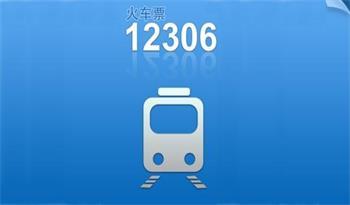
分享兴趣,传播快乐,增长见闻,留下美好!
亲爱的您,这里是LearningYard学苑。
今天小编为大家带来“信息系统开发课程笔记(二)|信息系统开发概述(2)”,欢迎您的访问。
Share your interests, spread your joy, grow your insights, and leave your beauty behind!
Dear you, this is LearningYard Academy.
Today I bring you "Information Systems Development Course Notes (2) | Overview of Information Systems Development (2)", welcome to visit.
1
信息系统的类型
信息系统按信息系统用户类别可分为前端信息系统和后端信息系统。前端信息系统是指支持延伸到企业客户的业务功能的信息系统;后端信息系统是指支持组织内部业务运行并直达供应商的信息系统。按照提供的功能,服务组织的层次,信息系统可分为事务处理系统,管理信息系统,办公自动化系统,知识工作系统,决策支持系统,经理信息系统。
Information systems can be divided into front-end information systems and back-end information systems by information system user category. Front-end information systems are information systems that support business functions that extend to corporate customers; back-end information systems are information systems that support business operations within the organization and reach suppliers directly. According to the functions provided, the level of the service organization, information system can be divided into transaction processing system, management information system, office automation system, knowledge work system, decision support system, and manager information system.
2
事务处理系统
事务处理系统是操作层的系统,主要完成信息的捕获,生成,存储和传递等任务,支持企业业务中例行的,常规性的事务活动。主要处理结构化问题,处理步骤很固定,主要操作就是排序,列表,更新,使用的运算是简单的加减乘除运算,使用人员是操作人员。
典型的事务处理系统包括超市pos系统,教务信息系统,航空公司订票系统,收支账目系统,工资管理系统,订单录入系统,存货控制系统,图书管理系统等。
主要特点:支持日常运作,处理大量数据,精度要求高,逻辑关系简单,重复性强,支持多用户。
Transaction processing systems are operational layer systems that capture, generate, store and deliver information to support routine and regular transaction activities in the enterprise business. The main operations are sorting, listing, and updating, and the operations used are simple addition, subtraction, multiplication, and division, and are performed by operators.
Typical transaction processing systems include supermarket pos system, teaching information system, airline booking system, income and expenditure account system, payroll management system, order entry system, inventory control system, book management system, etc.
Main features: support daily operation, handle large amount of data, high accuracy requirement, simple logical relationship, high repeatability, support multi-user.
3
管理信息系统(MIS)
广义的管理信息系统泛指应用于管理的信息系统。狭义的理解是组织中为管理人员提供定期的,预先定义好内容与格式的,经过汇总的信息的报表。管理信息系统的输入主要来自于组织内的各种事务处理系统。
主要特点:管理信息系统支持操作层和管理控制层的结构化决策;管理信息系统一般是面向报表和控制的,提供对业务工作的日常控制;管理信息系统提供的报表缺乏灵活性,不能任意定义报表的内容和格式;管理信息系统是针对内部的而不是外部的;信息需求是已知和稳定的。
Broadly speaking, management information systems refer to information systems used for management purposes. In a narrower sense, it is understood as a report that provides managers in an organization with regular, pre-defined content and formatted, summarized information. The input to the MIS comes mainly from the various transaction processing systems in the organization.
Main features: MIS supports structured decision making at the operational and management control levels; MIS is generally report and control oriented, providing daily control of operational work; MIS provides reports that lack flexibility and cannot arbitrarily define the content and format of reports; MIS is for internal rather than external; information requirements are known and stable.
4
事务处理系统和管理信息系统的区别
事务处理系统:面向数据,以处理数据为核心;针对某一职能制成一个独立系统;处理详尽的数据。
管理信息系统:面向信息,以生成有用信息为核心;包括各职能子系统,还包括上层系统;处理综合性的指标,趋势性的信息。
Transaction processing system: data-oriented, with data processing as the core; made into a separate system for a certain function; handles detailed data.
Management information system: information-oriented, with the generation of useful information at its core; includes functional subsystems and also upper-level systems; deals with comprehensive indicators, trend information.
5
决策支持系统(DSS)
决策支持系统是辅助决策者通过数据,模型和知识,以人机交互方式进行半结构化或非结构化决策的计算机应用系统。与事务处理系统相比有模型。
主要特点:支持决策者进行决策分析并做出决策,而不是代替决策者进行决策;可用于各种结构化程度的问题,但重点在于半结构化问题;可对各层管理进行支持,但重点在于较高层次,这个层次的问题结构性最差;主要应用数据和模型进行决策分析,对结果进行优化和分析;人机交互。
Decision support systems are computer applications that assist decision makers in making semi-structured or unstructured decisions through data, models and knowledge in a human-computer interactive manner. There are models compared to transaction processing systems.
Main features: supports decision makers in decision analysis and making decisions rather than replacing them; can be used for various levels of structured problems, but the focus is on semi-structured problems; can support all levels of management, but the focus is on the higher level, which has the least structured problems; mainly applies data and models for decision analysis and optimizes and analyzes the results; human-computer interaction.
今天的分享就到这里,如果您对今天的文章有独到的见解,欢迎给我们留言,让我们相约明天,祝您今天过得开心快乐!
Today's share is over here, if you have unique views on today's article, welcome to leave a message for us, let us meet tomorrow, I wish you a happy and happy today!
参考资料:文字:百度;图片:微博;翻译:百度翻译
本文由LearningYard新学苑原创,部分图片文字来自网络,如有侵权请联系。
,- 讯飞输入法怎样设置表情包的意思(用年轻人的方式与年轻人交流)
- 支付宝账号注销后再注册会怎么样(支付宝账号会一起注销吗)
- excel ctrl+t怎么用(Ctrl)
- wps设置文本框大小(【PPT】其实文本框调整大小的时候文字也能跟着变的哇~)
- 苹果13pro高刷怎么感觉不快了(13)
- 怎么查苹果电脑序列号查询(Mac)
- 为什么晚安后面会加名称呢(就别对异性说了)
- 苹果siri怎么发送不了微信(iPhone才能玩)
- 在交管12123换驾驶证需要准备什么(操作方法速戳↓)
- macbook air登录密码忘记(Air)
- 怎么修改照片大小30kb以上(把图片压缩到够小)
- 趣步现在怎样了(趣步涉嫌*被立案调查)
- 中秋几天假国庆节几天假(今年还有16天假)
- 快手的粉丝团怎么加(快手招商团长入驻详细步骤)
- 主播pk中怎么进入对面房间(直播PK有什么技巧)
- 排名
- 软件
- 人气
- 下载

 奇热小说
奇热小说 QQ2019手机版
QQ2019手机版 王者荣耀
王者荣耀 百度浏览器迷你版
百度浏览器迷你版 2345浏览器手机版
2345浏览器手机版 网易邮箱
网易邮箱 爱奇艺
爱奇艺 网易云音乐
网易云音乐 WPSOffice
WPSOffice 优酷
优酷
















 12306火车票春运抢票专版下载
12306火车票春运抢票专版下载
 春运抢票神器来袭啦!
春运抢票神器来袭啦!